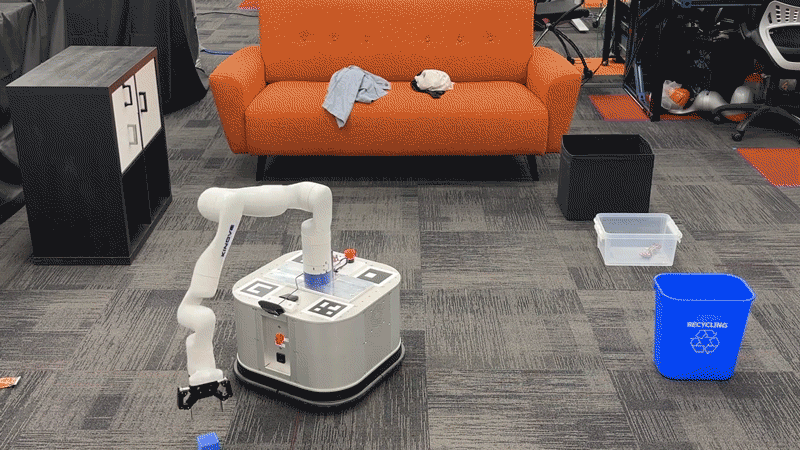2023-07-24 プリンストン大学

◆テストでは、TidyBotは物のカテゴリーを85%の正確さで識別し、適切な場所に配置できることが確認されました。今後の研究では、TidyBotのスキル向上や複雑なタスクをこなす特殊なロボットの開発、複数のロボットを連携させる研究が期待されています。この成果は、ロボットを使った家事の効率化と環境への負荷の軽減に貢献する可能性を持っています。
<関連情報>
- https://engineering.princeton.edu/news/2023/07/24/engineers-clean-tidybot
- https://arxiv.org/abs/2305.05658
TidyBot:大規模言語モデルでパーソナライズされたロボット支援
TidyBot: Personalized Robot Assistance with Large Language Models
Jimmy Wu, Rika Antonova, Adam Kan, Marion Lepert, Andy Zeng, Shuran Song, Jeannette Bohg, Szymon Rusinkiewicz, Thomas Funkhouser
arxiv Submitted on: 9 May 2023
DOI:https://doi.org/10.48550/arXiv.2305.05658
For a robot to personalize physical assistance effectively, it must learn user preferences that can be generally reapplied to future scenarios. In this work, we investigate personalization of household cleanup with robots that can tidy up rooms by picking up objects and putting them away. A key challenge is determining the proper place to put each object, as people’s preferences can vary greatly depending on personal taste or cultural background. For instance, one person may prefer storing shirts in the drawer, while another may prefer them on the shelf. We aim to build systems that can learn such preferences from just a handful of examples via prior interactions with a particular person. We show that robots can combine language-based planning and perception with the few-shot summarization capabilities of large language models (LLMs) to infer generalized user preferences that are broadly applicable to future interactions. This approach enables fast adaptation and achieves 91.2% accuracy on unseen objects in our benchmark dataset. We also demonstrate our approach on a real-world mobile manipulator called TidyBot, which successfully puts away 85.0% of objects in real-world test scenarios.



